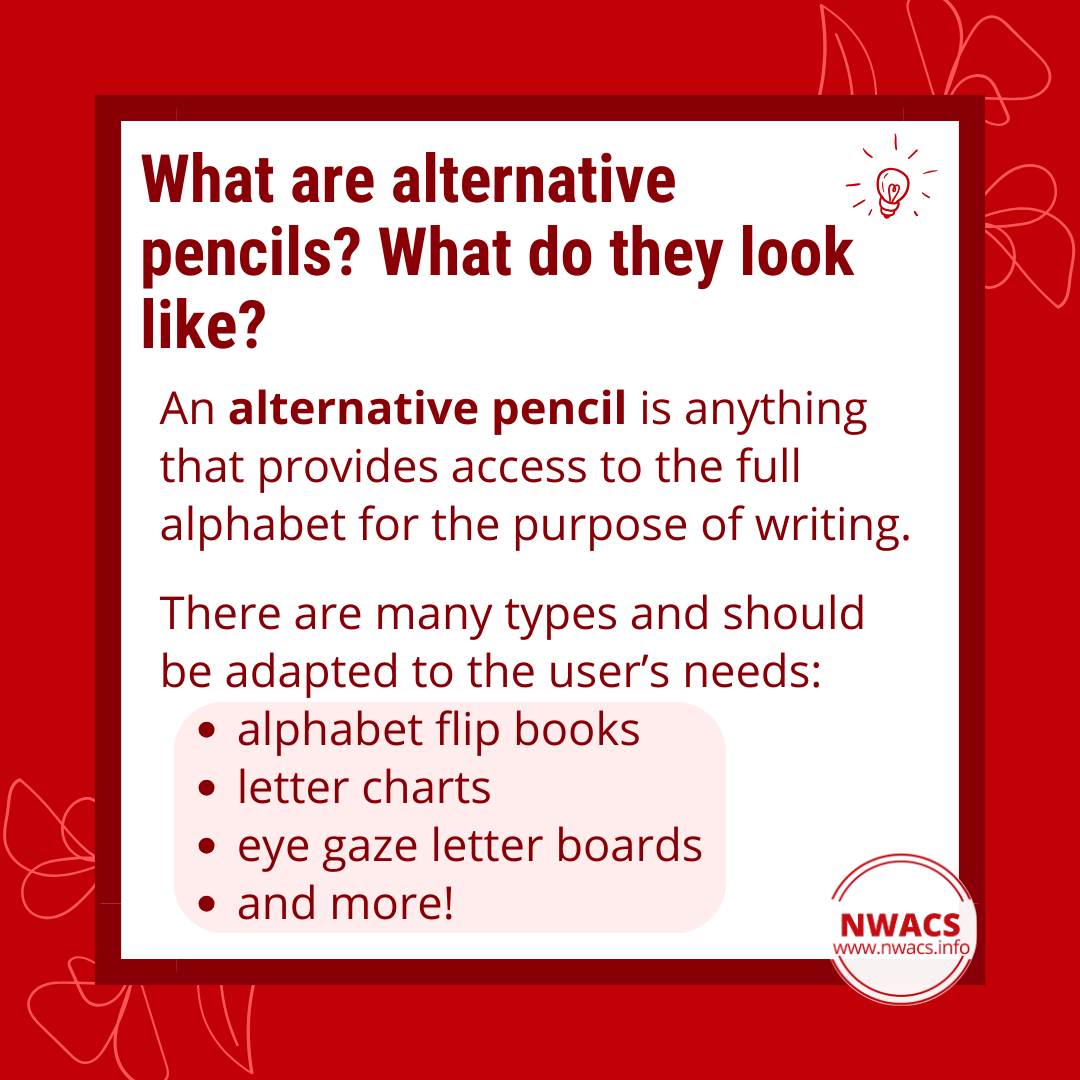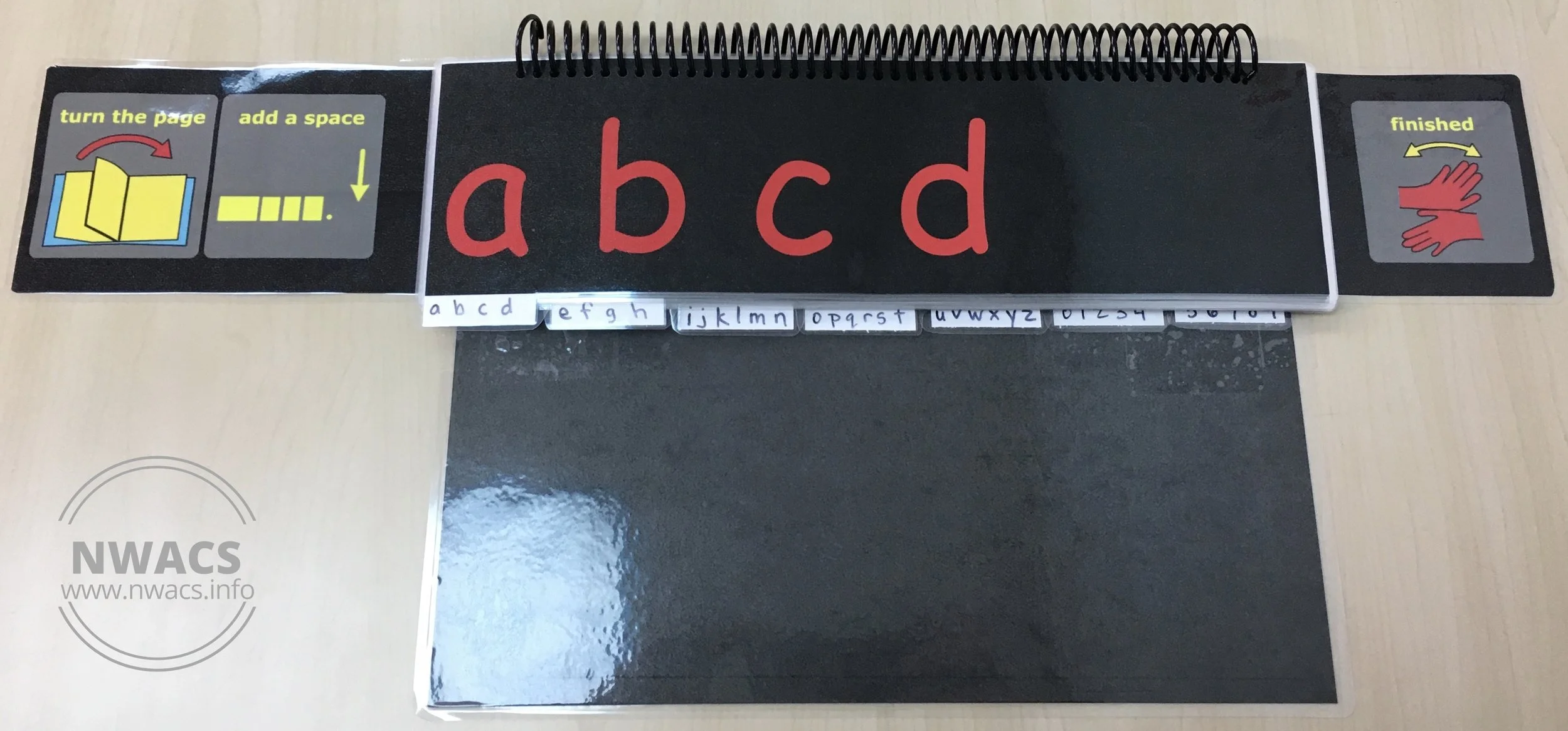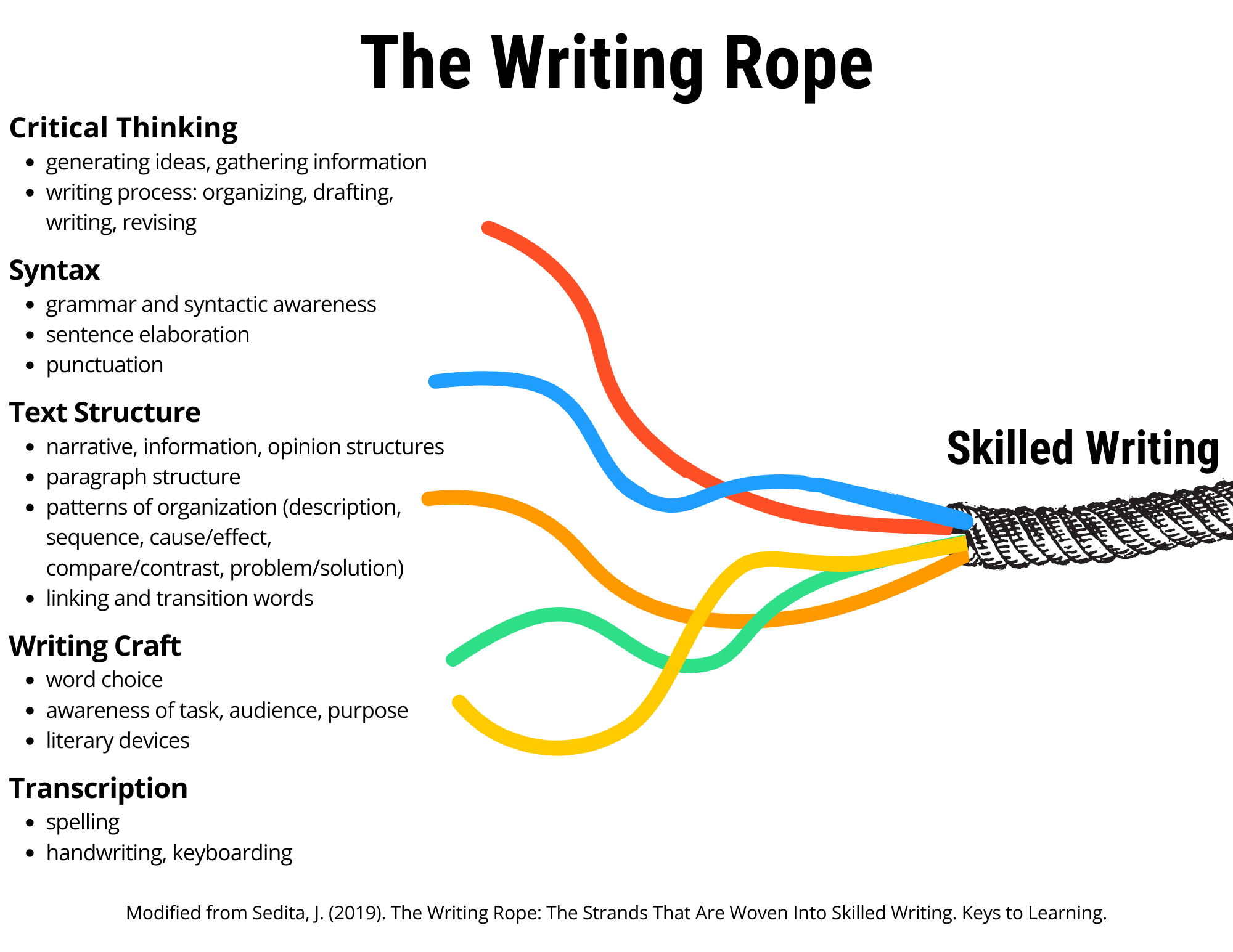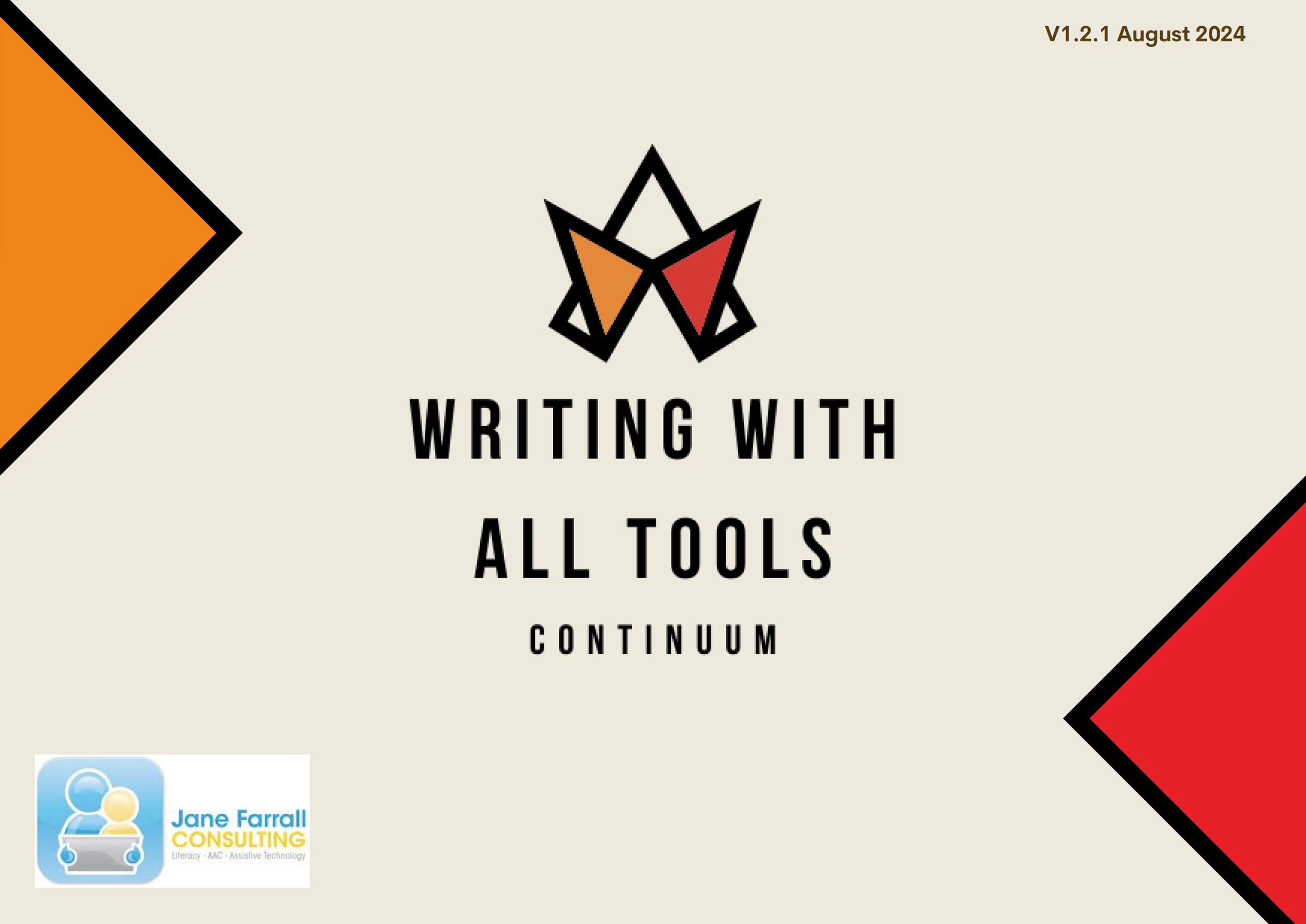by Cassandra Stafford, MS, SLP/L, ATP (speech-language pathologist and assistive technology professional); NWACS board member
reading time: 7 minutes
The views expressed in this post are those of the author and do not necessarily reflect the views and policies of NWACS. No endorsement by NWACS is implied regarding any device, manufacturer, resource, or strategy mentioned.
This is the third of three posts in this ‘Science of Literacy’ series. If you missed the first two, go read them here:
Literacy Instruction is for All
The Science of Reading is for Everyone
Literacy right #6 is the right to have teachers and other service providers who are knowledgeable about literacy instruction methods and principles.
Methods include but are not limited to instruction, assessment, and the technologies required to make literacy accessible to individuals with disabilities.
Principles include, but are not limited to, the beliefs that literacy is learned across places and time, and no person is too disabled to benefit from literacy learning opportunities.
Providers who are knowledgeable about literacy instruction. What do we need to know to be knowledgeable about writing instruction? We have years of research and evidence to guide us. So let’s dig into the science of writing!
A couple of reminders:
Disability doesn’t change what a learner needs to be taught.
The WHAT of writing instruction is the same for all learners, including those with diverse needs. It is in the HOW that we modify to accommodate the needs of disabled learners. Modify our instruction and/or modify how disabled learners show their understanding and skills.
Receptive - Expressive. Emergent to Conventional.
Literacy (which is language in a text format) involves both receptive and expressive skills. Reading is understanding language presented in text form. Writing is expressing ourselves through print-based language. Just like communication skills can be emergent, so can literacy skills. Reading skills can be emergent or conventional. Writing skills can be emergent or conventional. Emergent literacy is everything that comes before and develops into conventional reading and writing.
Why teaching writing is a must too.
“Importantly, studies have shown that writing instruction can support reading development, and reading instruction can help develop writing skills, and teaching them together can improve both reading and writing skills (Graham &Hebert, 2010; Graham et al., 2018).”
“According to the interactive and dynamic literacy model (Kim, 2020, 2022), reading and writing draw on essentially the same skills (see also the shared knowledge hypothesis, Fitzgerald & Shanahan, 2000) and have bidirectional relationships.”
“In other words, evidence suggests that when reading instruction fails to capitalize on writing instruction and when writing instruction fails to capitalize on reading instruction, students are being deprived of valuable learning opportunities.”
– Young-Suk, et. al. (2024)
Writing plays an integral role in building literacy skills. Many cognitive and linguistic skills support both reading and writing skill development. These cognitive and linguistic skills are also developed through reading and writing work! When we bring all these areas together, it is one big interactive support fest!
Alternative Pencils
An alternative pencil is anything that provides access tot he full alphabet for the purpose of writing.
When we talk about writing, we do not mean handwriting. We mean expressing ideas and thoughts in literary form (e.g., notes, blogs, emails, texts, articles, etc.). While some learners can use handwriting to write, not all can. Some learners need alternative pencils. Alternative pencils are writing tools designed for people who are unable to hold traditional writing tools (such as a pen/pencil) or physically use a standard keyboard. An alternative pencil is anything that provides a learner with access to all letters of the alphabet for the purpose of constructing text.
There are many types of alternative pencils.
alphabet flipbooks
letter charts
eye gaze letter boards
and more!
These writing tools should be adapted to the user’s needs. For example, large letters and high-contrast colors can improve access for those with visual impairments.
high-contrast alphabet flipbook
Learners do not need to know how to read and spell to use an alternative pencil! Neurotypical children draw and scribble before they read and write. They often write individual and sequenced letters before they can spell. Similarly, learners with disabilities deserve opportunities to explore and use letters with alternative pencils before they can read and spell. We should provide access to the full alphabet via alternative pencils early. And provide frequent opportunities to explore and use letters before they can read and spell.
We learn to write by writing. With access to the alphabet and opportunities to write, everyone can be a writer - even if they use a different writing tool.
Here are some resources to get you started with alternative pencils:
www.janefarrall.com/lots-of-alternatives-pencils-for-everyone/
https://janefarrall.com/writing-tools-to-download-share-and-customise/
Recommendations For Effective Writing Instruction
In 2019, Joan Sedita used the “Reading Rope” (discussed in part two of this series) as an inspiration to develop the “Writing Rope”. This model is helpful for us in visualizing the components involved in skilled writing.
Image of the writing rope modified from Joan Sedita (2019).
To be a proficient writer, you need many skills. In 2012, a panel reviewed research and evidence to compile recommendations for effective writing instruction. The recommendations include:
Provide daily time for writing.
Teach the writing process.
Teach writing for a variety of purposes.
Teach basic writing skills.
Create a supportive writing environment.
Let’s take a closer look at those recommendations.
Provide daily time for writing.
Learners need dedicated instructional time to learn the skills and strategies they need to become effective writers. They also need time to practice. Writing practice can be embedded into other content areas (e.g., science, history, etc.). But ample time for writing daily is crucial.
Teach the writing process.
Writing is more than just putting words “on paper.” It is a process to get from ideas to the end product. It involves:
planning
drafting
sharing
evaluating
revising
editing
publishing
Learners need to develop an understanding of and strategies for all the components of writing.
Teach writing for a variety of purposes.
We write for different purposes. Learning how to write effectively for different purposes is important for academic success, as well as for active participation in work and social life. We all need to learn how to adjust our writing to be the most effective for our purpose and audience. We write to
describe
narrate
inform
persuade
analyze
We need to teach and provide opportunities to practice writing for all different purposes and audiences.
Teach basic writing skills.
Translating thoughts and ideas into writing involves choosing and putting letters on paper (using a tool to write), spelling, and sentence construction. As these basic writing skills become more automatic, learners can focus less on these skills and more on developing and communicating their ideas. Thus, it is important to devote ample time to developing these skills.
Teach them their way of accessing all the letters of the alphabet and give ample practice using their writing tool(s).
Teach spelling skills as well as how to generate plausible spelling approximations (and how to check the spelling later).
Generating spelling approximations while drafting helps keep the flow of ideas with minimal disruption.
While editing, they can check and correct spelling.
Spelling skills involve:
phonological awareness
phonics and spelling patterns
morphological knowledge
Teach them to construct sentences for fluency, meaning, and style.
meaning
syntax
conventions, like capitalization and punctuation
variety of sentence structures/types
Create a supportive writing environment.
A supportive writing environment increases learner motivation to write - and to write to the best of their ability. We need to convey the message that their writing is important, valued, and worth the effort!
model
show how the ability to write affects your daily life
show the importance of writing to communicate
model the perseverance needed to work through the writing process
share the satisfaction of creating meaningful text
give writing choices
this increases engagement and motivation to write
encourage collaboration
this can help learners feel more safe participating and increase feelings of belonging
give and receive feedback
this helps learners know whether their writing conveys their intended message
learning how to give and receive feedback is an important skill
publish their writing
this can help learners feel valued as writers and foster pride in their writing
Reminder: The WHAT of these recommendations for effective writing instruction is the same for all learners, including those with diverse needs. It is in the HOW that we modify to accommodate the needs of disabled learners. Modify our instruction and/or modify how disabled learners show their understanding and skills.
Writing With All Tools Continuum
Writing With All Tools Continuum, Jane Farrall Consulting (v1.2.1 August 2024)
Monitoring progress for learners with disabilities can feel tricky. As can knowing how to guide them through different stages of writing development. Jane Farrall has developed a useful resource for assessing writing samples and teaching students to move through writing stages. The Writing With All Tools Continuum (WWATC) offers guidance on how to
score writing samples and
measure small changes in a learner’s writing.
It also explains how to move learners through the writing continuum. It can be used for writing with any tool (including alternative pencils).
The WWATC is organized into two parts:
Part I: from marks to sentence fragments
letters or marks
letters and spaces
off-topic words, sentence fragments, and/or sentences (some learners may skip this step)
phonetic stage
words
sentence fragments
Part II: from simple sentences to multiple elements
simple sentences
expanded sentences
complex sentences
multiple elements
The tool is free to download and use. There is also a link to a webinar recording (presented by Jane Farrall in 2022) and a handout. Learn more here: https://comprehensiveliteracy.com/writing-with-all-tools-continuum/
Other Free Monitoring Tools That May Be Helpful
Adult-Student Emergent Writing Interaction Inventory, Center for Literacy and Disability Studies at UNC Chapel Hill (Adapted from the Adult-Child Interactive Reading Inventory DeBruin-Parecki, Adapted by Hanser, 8/2009)
A DRAFT adapted/modified BRIDGE for students with complex needs (Adapted by Erin Sheldon, M Ed, from The BRIDGE, an observational portfolio rating scale by Pierce, Summer, O’DeKirk, 2005); looks at emergent literacy skills, including the areas of
foundations of reading
foundations of writing
alphabet knowledge
phonological / phonemic awareness
oral language (related to literacy activities)
We all play a role in supporting literacy development! What is one step you can take to level up your support?
Related Blog Posts
Related Resources
AAC & Literacy (NWACS resource page)
The Knowledge Gap: The Hidden Cause of America's Broken Education System--and How to Fix It by Natalie Wexler (2019)
References
Erickson, K. A., & Koppenhaver, D. A. (2020). Comprehensive Literacy for All: Teaching Students with Significant Disabilities to Read and Write. Paul H. Brookes Publishing Co.
Graham, S., Bollinger, A., Booth Olson, C., D’Aoust, C., MacArthur, C., McCutchen, D., & Olinghouse, N. (2012). Teaching elementary school students to be effective writers: A practice guide (NCEE 20124058). Washington, DC: National Center for Education Evaluation and Regional Assistance, Institute of Education Sciences, U.S. Department of Education. Retrieved from http://ies.ed.gov/ncee/wwc/publications_reviews.aspx#pubsearch.
Sedita, J. (2019). The Writing Rope: The Strands That Are Woven Into Skilled Writing. Keys to Learning. Retrieved from https://keystoliteracy.com/the-writing-rope-by-joan-sedita/
Young-Suk Grace Kim, Karen R. Harris, Rebecca Goldstone, April Camping & Steve Graham (2024) The Science of Teaching Reading is Incomplete without the Science of Writing: A Randomized Control Trial of Integrated Teaching of Reading and Writing, Scientific Studies of Reading, DOI: 10.1080/10888438.2024.2380272






